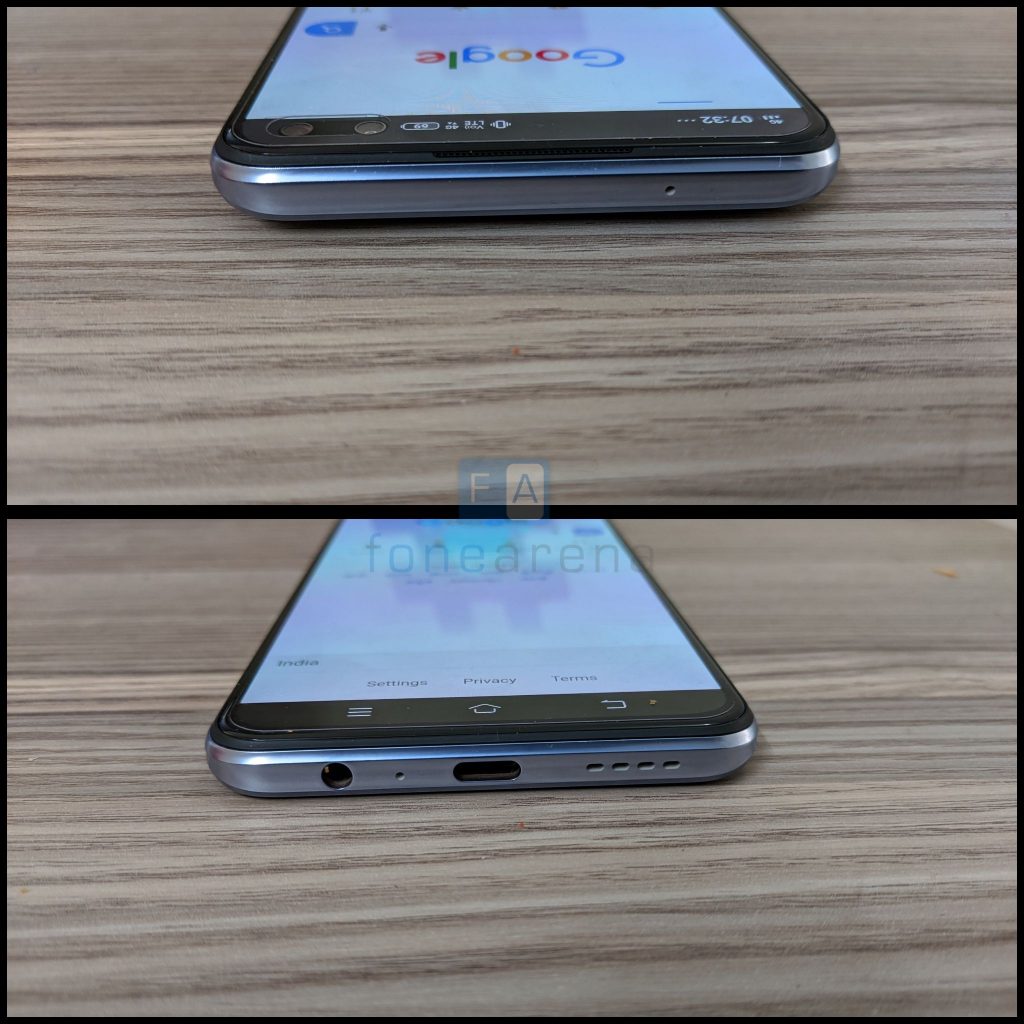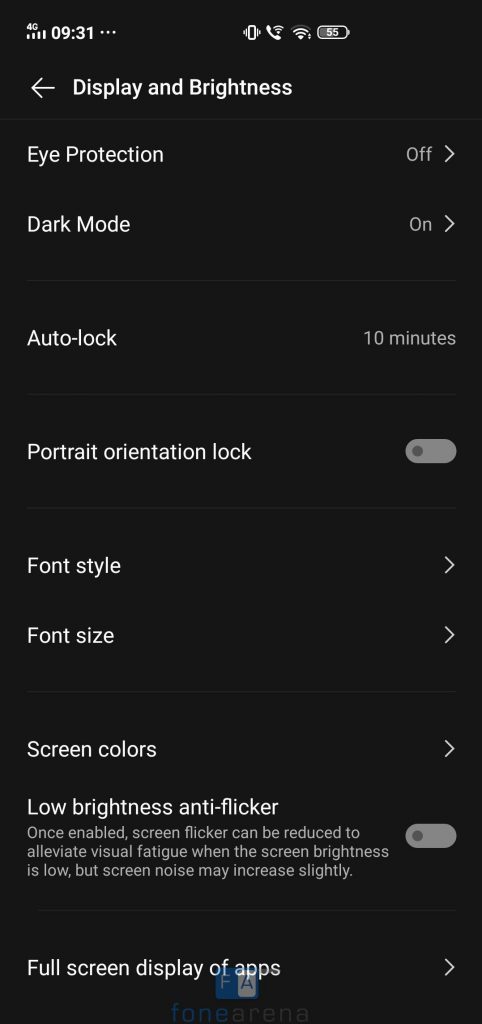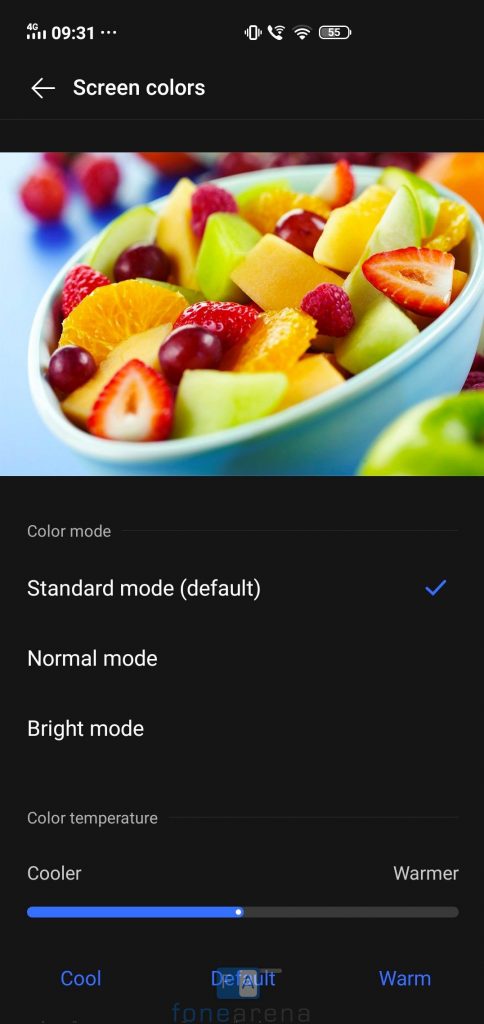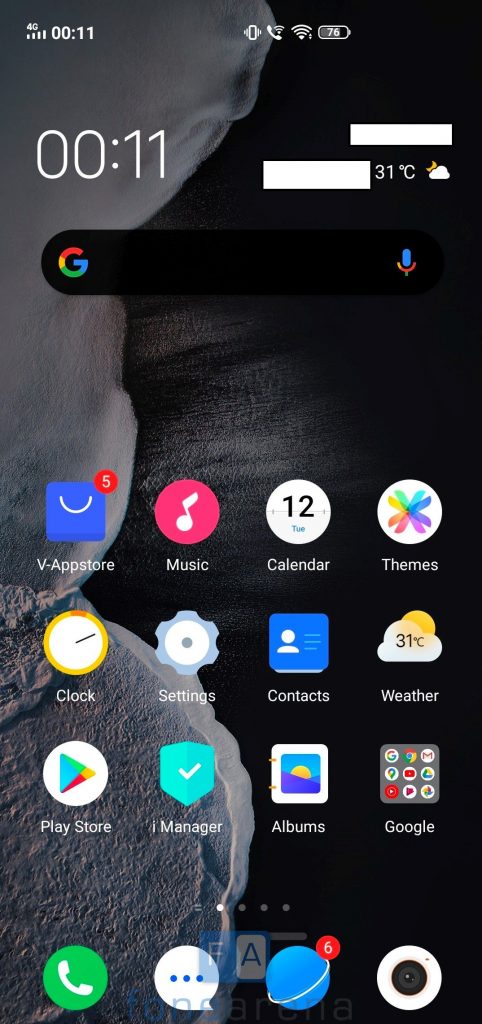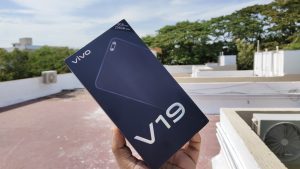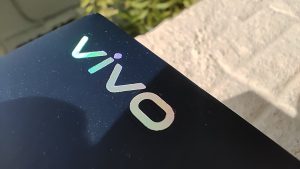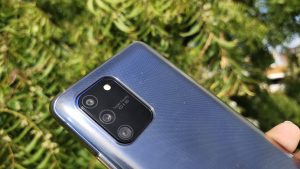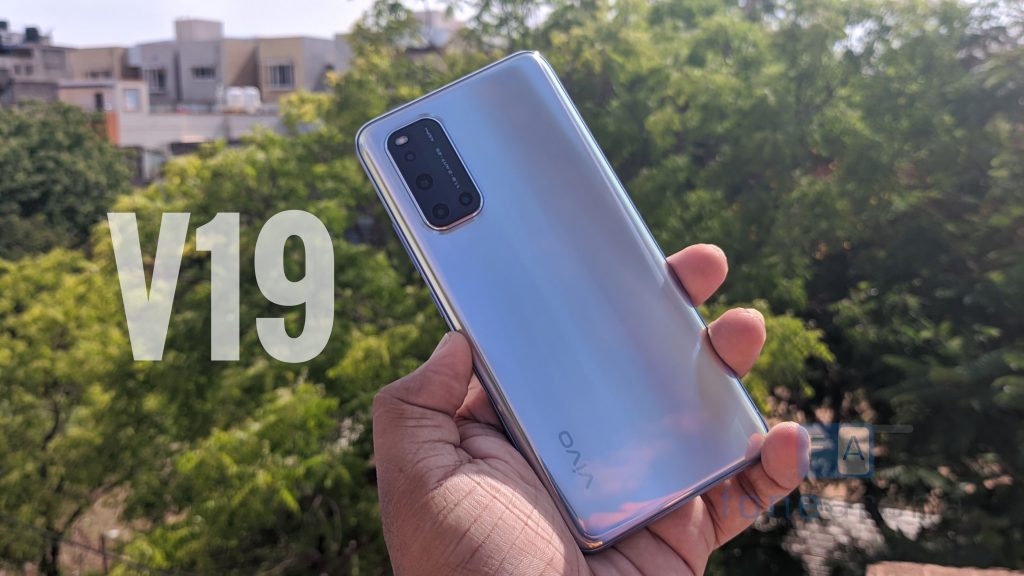
Vivo has been rapidly expanding its smartphone line up globally with back to back launches. The company launched the Vivo V17 and Vivo V17 Pro smartphones last year aimed at offline buyers. This year, Vivo has launched the successor to the V17 smartphone – the Vivo V19 after delays due to the ongoing nationwide lockdown. So, is it a worthy upgrade to the previous generations and is it worth your money? Let us find out in this review.
Before getting started with the review, here’s a quick recap of the specifications of the Vivo V19
Vivo V19 specifications
- 6.44-inch (2400 × 1080 pixels) Full HD+ 20:9 E3 Super AMOLED 2.5D curved glass display with 100% DCI-P3 colour gamut, up to 800 nits brightness under sunlight
- Octa-Core Snapdragon 712 10nm Mobile Platform (Dual 2.3GHz Kryo 360 + Hexa 1.7GHz Kryo 360 CPUs) with Adreno 616 GPU
- 8GB LPDDR4x RAM, 128GB / 256GB UFS 2.1 storage, expandable with microSD
- Android 10 with Funtouch OS 10
- Dual SIM (nano + nano + microSD)
- Rear: 48MP (f/1.79 primary) + 8MP (f/2.2 wide-angle) + 2MP (f/2.4 depth) + 2MP (f/2.4 macro)
- Front: 32MP (f/2.0 primary) + 8MP (105° wide-angle f/2.2)
- In-display fingerprint sensor
- 3.5 mm audio jack, FM Radio
- Dimensions: 159.64 x 75.04 x 8.5 mm; Weight: 186.5g
- Dual 4G VoLTE, Wi-Fi 802.11 ac dual-band, Bluetooth 5, GPS/GLONASS, USB Type-C port
- 4500mAh (typical) battery with 33W vivo FlashCharge 2.0 fast charging
Box Contents
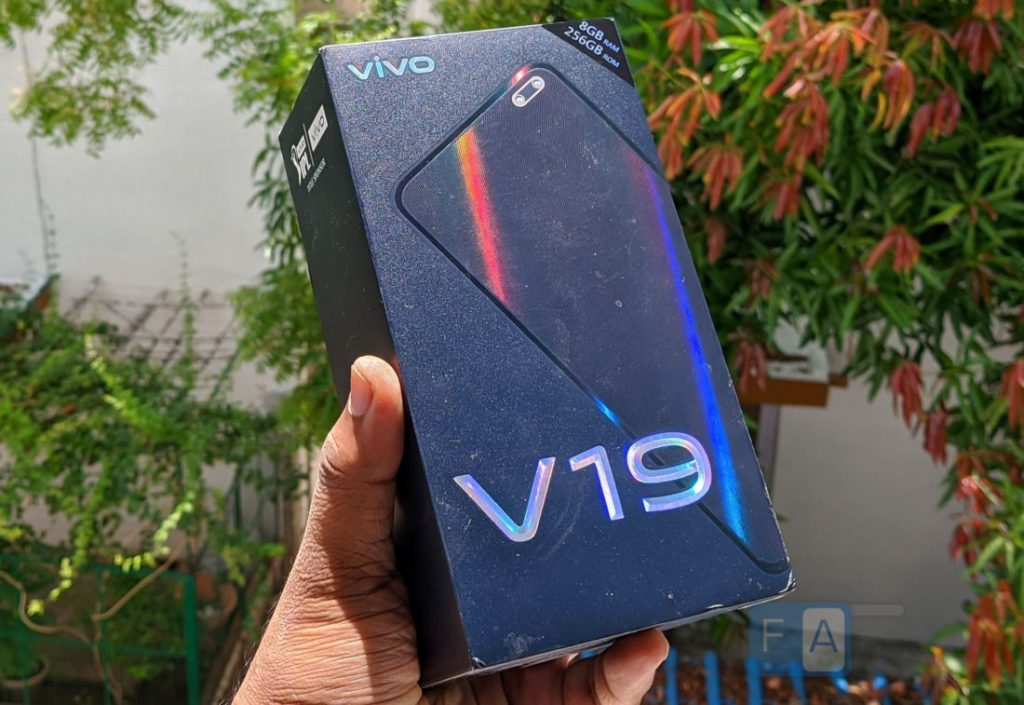
- Vivo V19 Smartphone (8GB + 256GB) in Sleek Silver color
- Transparent Case
- USB Type-C cable
- 33W Vivo FlashCharge 2.0 adapter
- In-ear style earphones
- User Guide
Physical Overview and Build Quality
The Vivo V19 takes design cues, specifically the camera layout from the recently launched iQOO 3 smartphone. It sports a shiny glass back that reflects light to produce different shades, and at the same time, it attracts a lot of fingerprints as well. The button placements are the usual affair with the power and the volume rockers to the right edge, Dual SIM plus microSD slot to the right edge, USB Type-C port, primary microphone, 3.5mm jack, speaker grille to the bottom, and secondary microphone to the top edge.
Vivo has traded off the pop-up camera on the V17 Pro to dual-punch hole cameras on the V19. This means you will be missing out on a full-screen experience, but on the other hand, it is a lot better to have a punch-hole compared to a notch. To recall, the Vivo V17 came with a single-punch hole and the V17 Pro came with a pop-up mechanism. Coming back, the bezels are narrow as well and I’d say, one-hand usage is definitely manageable on this phone. On the whole, the design isn’t a huge departure from the V17 Pro and is rather a familiar design which is quite good, to be honest.
Display
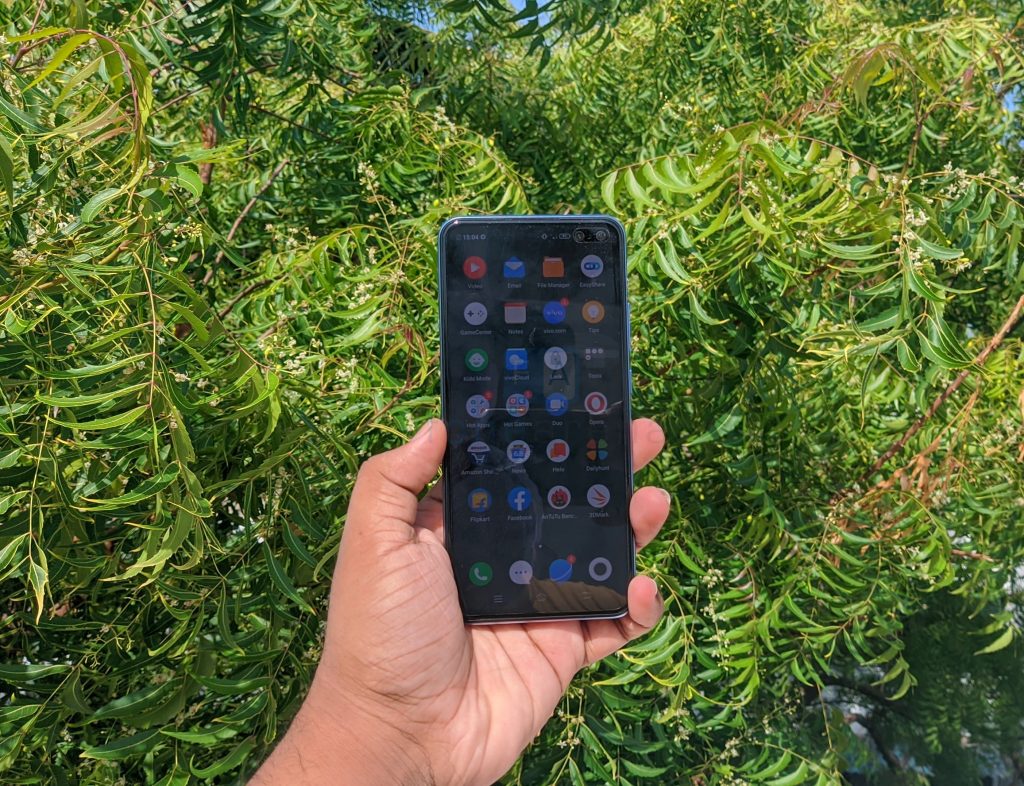
The Vivo V19 flaunts a 6.44-inch Full HD+ Super AMOLED display with 2.5D curves on the edges. Lately, the company has not compromised on the display quality and similarly, the Super AMOLED display on the Vivo V19 is very good with deep blacks and punchy colours. The display is sharp, and I am glad that it isn’t too saturated. Similarly, the sunlight legibility is decent as well.
As usual, you can choose between three different colour modes – Standard (the default one), Normal, and Bright, and also adjust the colour temperature to your liking. You also get DC Dimming in the form of ‘Low brightness anti-flicker’ which reduces screen flicker when the screen brightness is low. It is also HDR compliant and has Widevine L1 certification, which means that you can enjoy FULL HD playback on NetFlix and Amazon Prime Video. It is to be noted that there is no mention of the glass protection, but on the whole, the quality of the panel used by Vivo is very good, and I’ve no complaints here.
Software, UI, and Apps
The V19 runs on Android 10 based on FunTouch OS 10 and it is a step up from the FunTouch OS 9.1 that came with the V17 Pro last year. It is based on the concept of “Original Design” and comes with minimal UI design and new desktop icons. There is a new off-screen clock and Vivo has added new live wallpapers too. Funtouch OS 10 also brings changes to Jovi virtual assistant which can now provide users with a variety of thoughtful services, help users manage their smart devices, and more.
Fortunately, the iOS-like Control Center is now replaced with an easily accessible quick settings menu and you get a dedicated settings icon to jump to the settings quickly. There are still cues of iOS-like design here and there, but it is a lot better and polished compared to previous FunTouch OS versions. It now also features shortcut functions for driving scenarios, lets users customize font, brings child mode, cloud service, global search, and new features to photo album. There is also a cloud service that offers VIP benefits, 5GB free storage space, one-click backup, and more. Overall, FunTouch OS 10 on the Vivo V19 is minimalistic and refreshing.
Performance
Moving on to the performance part, the Vivo V19 is powered by the Octa-Core Snapdragon 712 10nm Mobile Platform which has Dual 2.3GHz Kryo 360 plus Hexa 1.7GHz Kryo 360 CPUs along with Adreno 616 GPU. It is paired with 8GB of LPDDR4X RAM with up to 256GB UFS 2.1 storage.
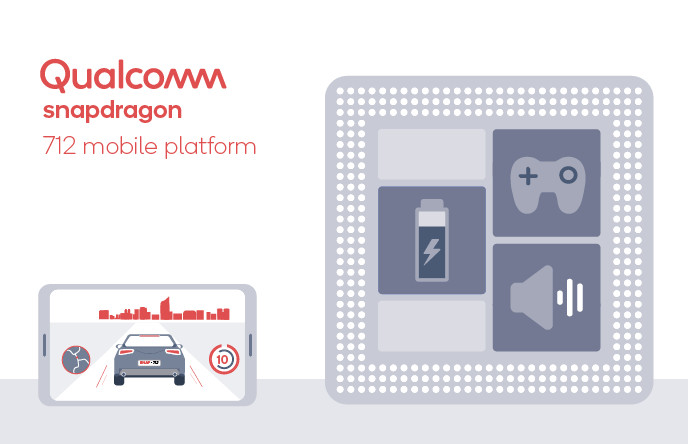
The Snapdragon 712 is a familiar SoC, and we have seen its capabilities in a range of smartphones including Vivo’s Z1x and Z1 Pro. Casual and day-to-day applications run fine without any issues, but it isn’t the same in the case of resource-intense tasks. It gets the job done, but isn’t the smoothest. Multitasking was just fine, but I did notice lags in UI at times and in some instances, only a reboot brought things to normal. This could be just an optimisation issue, and hopefully would be ironed out in future software updates.
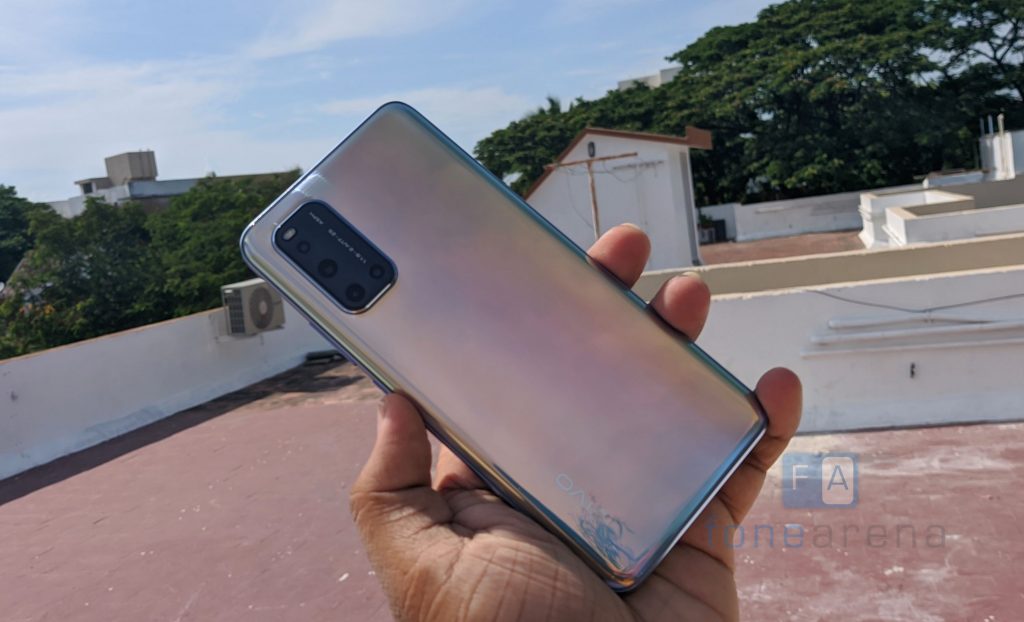
Similarly, the gaming performance was good for the most part, but we did notice occasional frame drops in graphic-intensive games. The thermals were fine and I didn’t notice any signs of overheating even after prolonged gaming. Although the processor is capable and gets the job done, Vivo could have packed a better SoC like the Snapdragon 730G or the Snapdragon 720G, considering the competition in this price segment.
We ran popular benchmark tools on the V19 and you can check out the scores below.
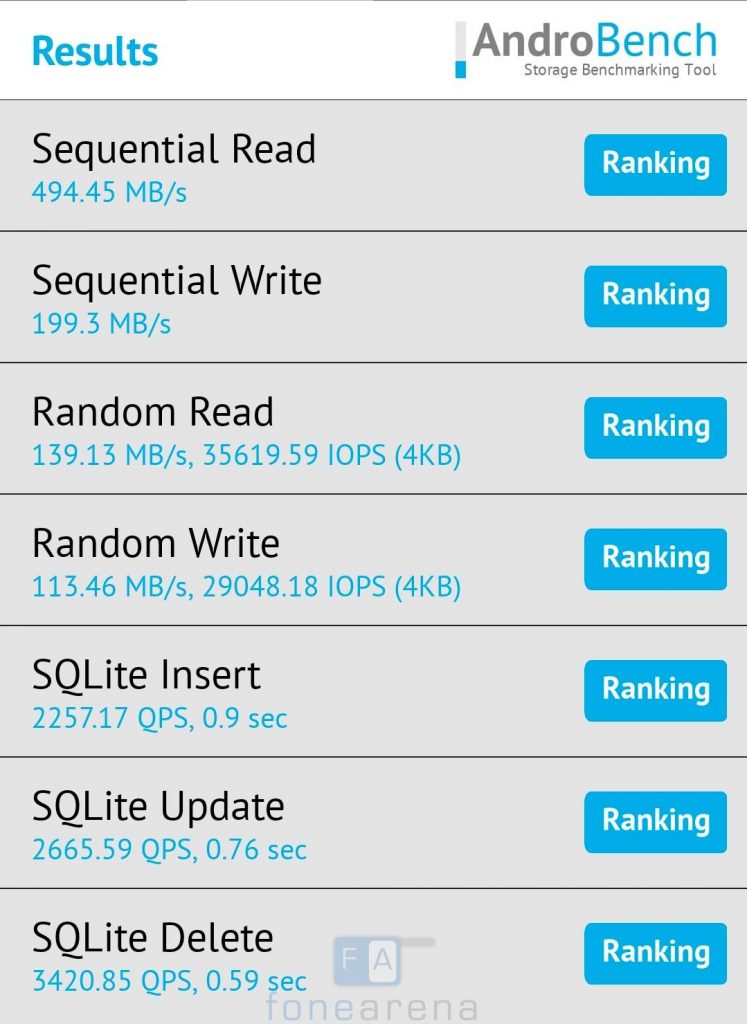
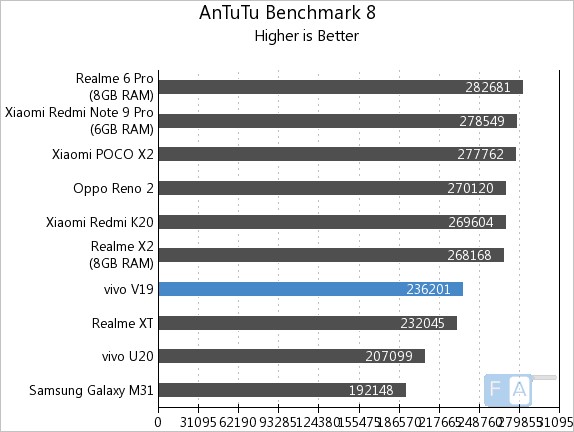
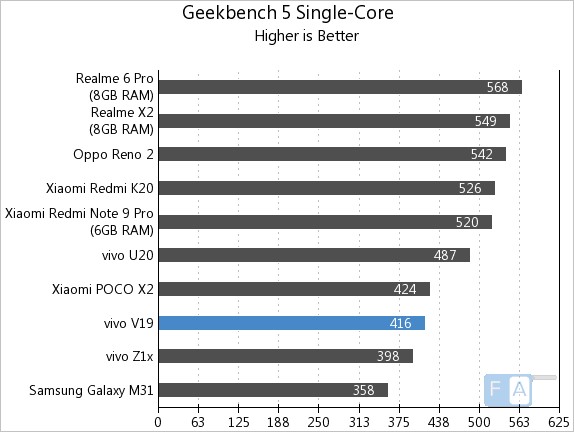
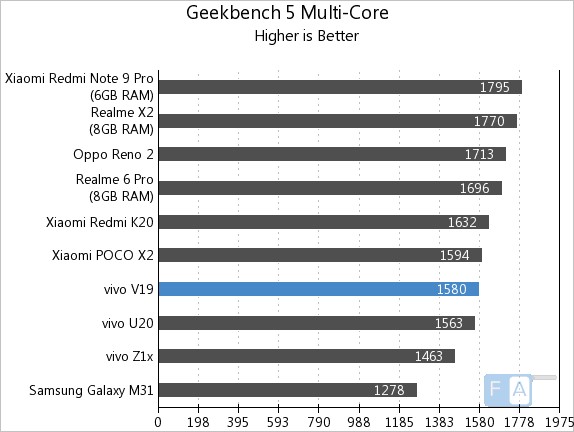

Connectivity
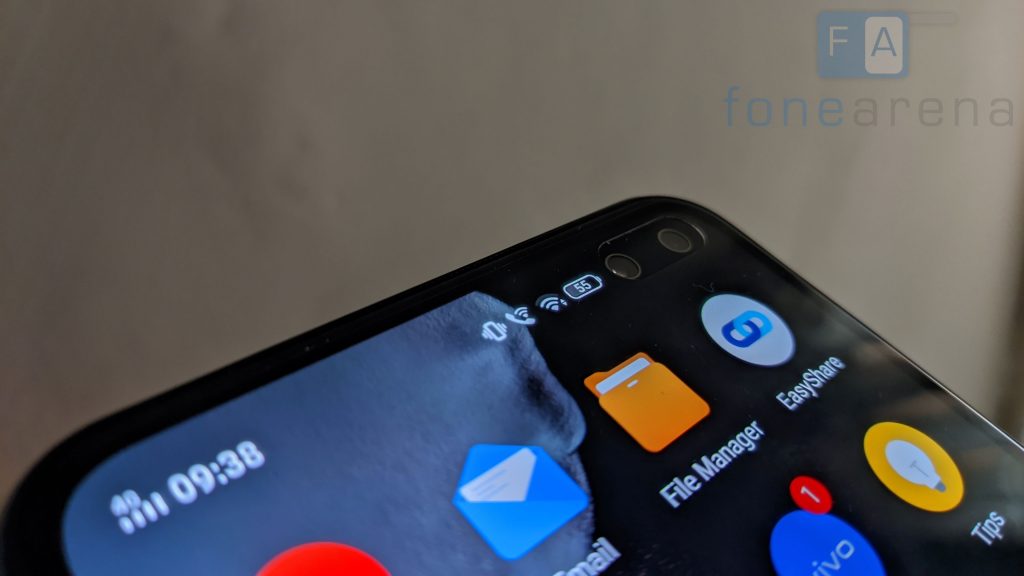
Regarding connectivity, the Vivo V19 supports Dual 4G nano-SIM cards with support for VoLTE (Voice over LTE) and Wi-Fi calling. The earpiece is located on the top frame, and the call quality is great.

Wi-Fi calling works as expected and the switch between VoLTE and VoWiFi is seamless as well. Overall, there were no issues with connectivity during my time with the phone and it was just perfect.
Fingerprint Scanner
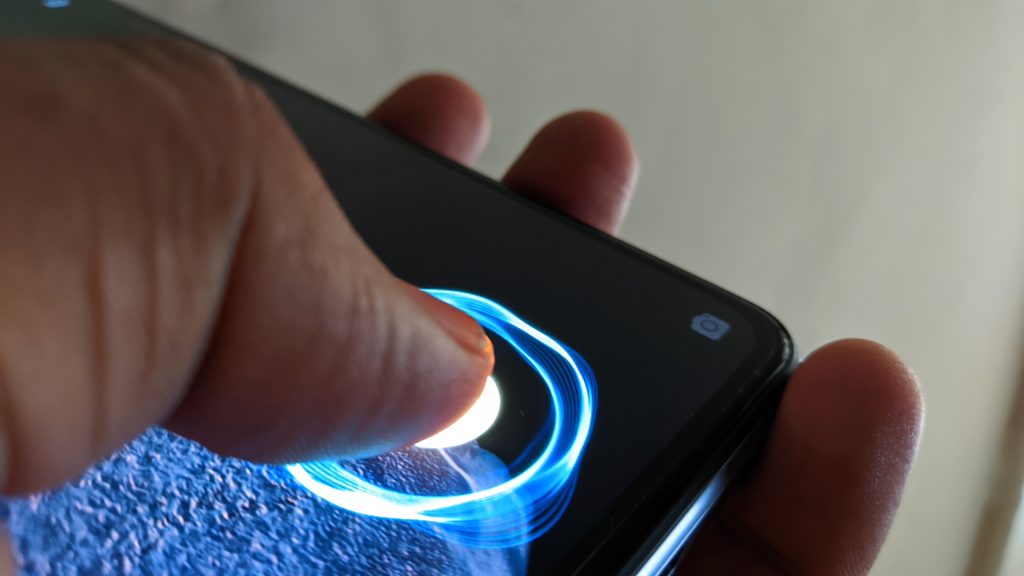
The V19 features an in-display fingerprint scanner and is much better compared to the previous generation. It is fast, responsive and you can even customise the charging animations between Traditional Fantasy, Phantom, Fusion, Fairyland, Cycle, and Mist styles. You can even choose to play the entire animation after unlocking the smartphone successfully. No complaints here.
Cameras
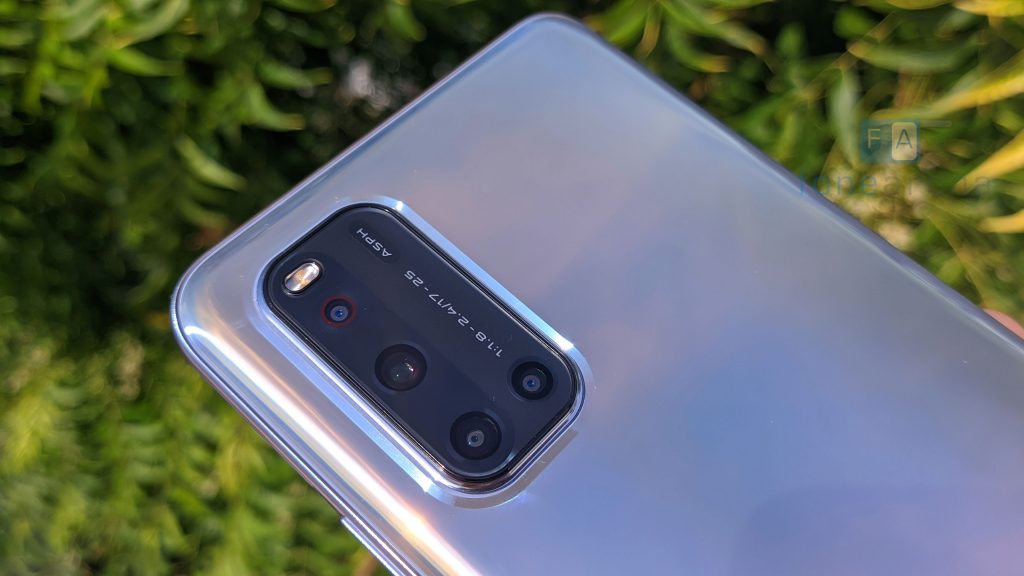
Coming to the optics, there is a quad-camera setup to the back and a dual-camera setup to the front. The rear cameras are a combination of a 48MP (f/1.79 primary) + 8MP (f/2.2 wide-angle) + 2MP (f/2.4 depth) + 2MP (f/2.4 macro) and the front-facing cameras are a combination of 32MP (primary f/2.0) + 8MP(f/2.2). When it comes to the output, the pictures taken on the primary 48MP camera come out really good in good lighting conditions with great detail, dynamic range, and sharpness. The 8MP ultra-wide angle gives a very good perspective and surprisingly, the ultra-wide shots came out much better than I expected. Similarly, the portrait shots came out good, but the edge detection was not on point. Lastly, the 2MP macro lens is just average I’d say as it works best with 4cm distance and does the job if you are super careful while shooting, else you’ll end up with blurry shots most of the time.
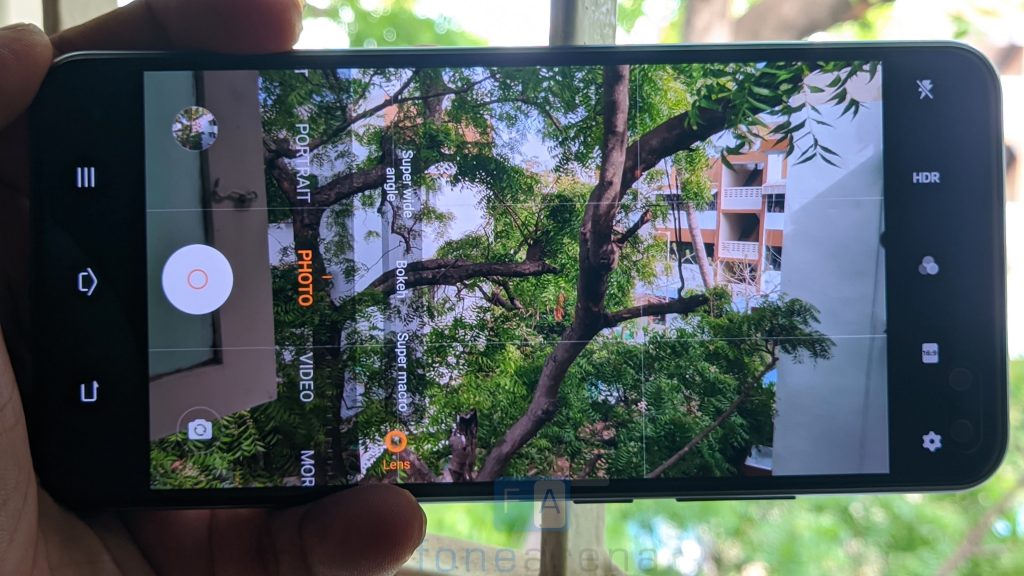
The pictures taken in artificial lighting conditions come out decent as well, but it struggles a bit in low and poor lighting conditions. There is a considerable amount of noise, but at the same time, the night mode kicks in and makes the shot usable. The night mode tends to crank up the ISO and brings a considerable amount of noise in the pictures. Moving on the video, it can shoot 4K video at 30fps and there is support for 1080p video at 60fps as well.
The videos shot on the 48MP lens come out quite good with a decent stabilisation. There is an “Ultra-Stable” option for video stabilisation, but it works at 720p resolution. When it comes to slow-motion videos, you can shoot in 720p resolution at 120fps or 240fps. The front-facing camera can shoot up to 1080p videos at 30fps.
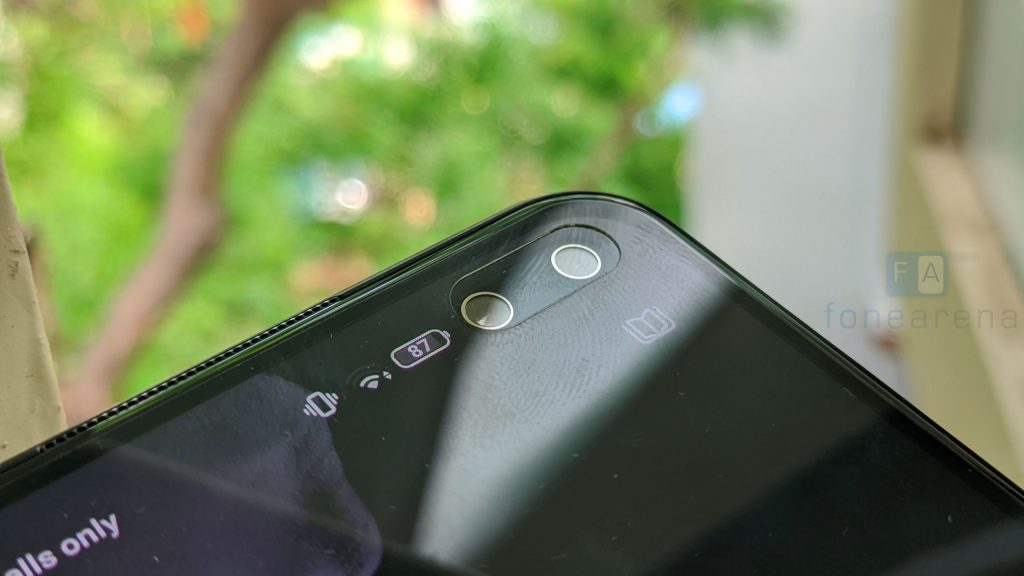
Talking about the front-facing camera, the dual-lens system does a pretty good job I’d say, but the exposure control is gone for a toss in certain conditions. The selfies themselves come out very good with a good amount of detail and even skin-tones, but Vivo could work on fixing the overblown highlights in selfie videos. Overall, the cameras are very good on this one and is definitely a capable setup. Check out the samples below
Battery Life
The Vivo V19 packs a 4500mAh battery with support for 33W (5V-2A or 9V-2A or 11V-3A Max) Vivo FlashCharge 2.0 fast charging. It is a step up from the 22.5W Dual Engine fast charging and it charges the V19 to 100% in about 1 hour 24 minutes. The Snapdragon 712 SoC is not resource-hungry and is known to provide great battery life and it is the same with the Vivo V19 as well.
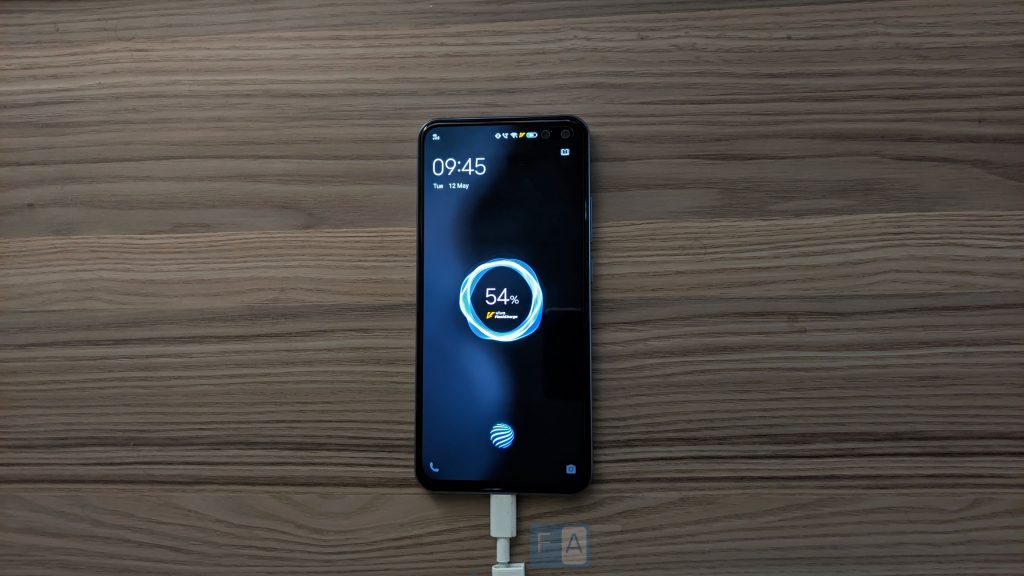
It lasts for an entire day with heavy usage, and you can get even more with average use. The standby drain isn’t too high and Vivo has done a good job in optimising the battery on this one. You also get a bunch of power-saving modes like “Low-power mode” and “Super Power-Saving Mode” that help you extend the juice left on this one. It also supports reverse charging that lets you charge other devices with a USB OTG cable. I also tested the bundled fast charger and here’s a breakup of the charging time
- 0-50% : 32min 35sec
- 0-80%: 57min 38sec
- 0-100%: 1hr 24min 31sec
The Vivo V19 achieved FoneArena OneCharge Rating of 18 hours 59 minutes.
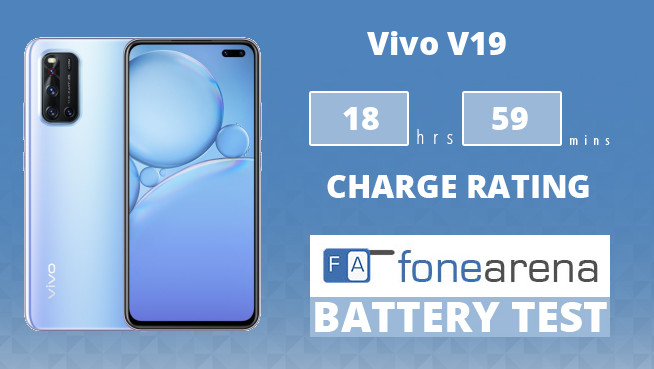
Conclusion
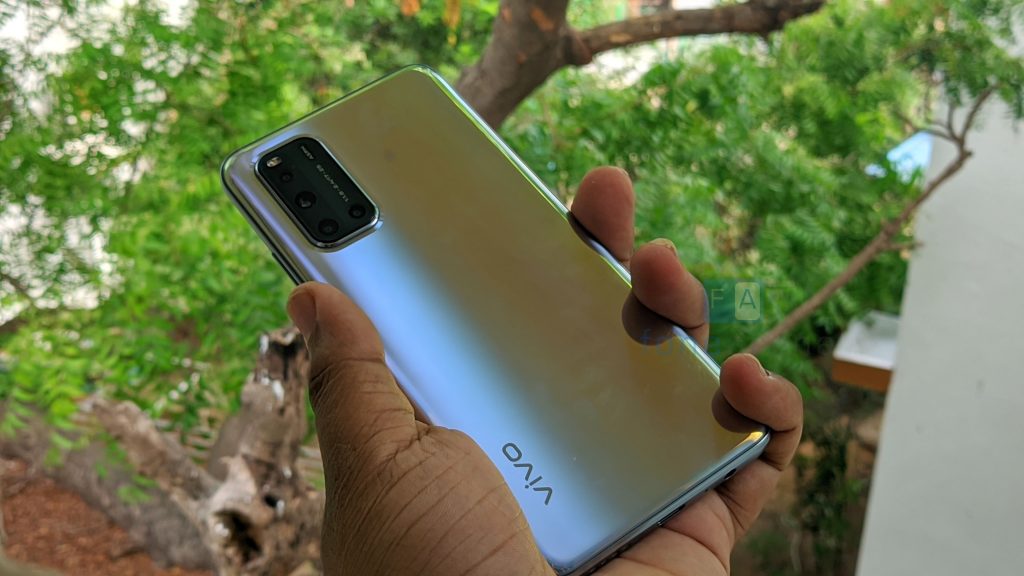
Vivo V19 comes in Sleek Silver and Gleam Black colour options and is priced at Rs. 27,990 for the 8GB RAM + 128GB storage and Rs. 31,990 for the 8GB RAM + 256GB storage model. The Vivo V19 is a pretty good upgrade to the Vivo V17 with a great display, battery life and a very good set of cameras. But at the same time, I’m surprised that why the company didn’t pack a much powerful SoC like the Snapdragon 730G or the Snapdragon 720G, considering the asking price. For instance, Vivo’s Z1X and Z1Pro pack the same Snapdragon 712 SoC, but at a much lower price. Having said that, the V Series are generally targeted towards offline buyers and gets the basics right, I would say. If you are a power-user or want a better gaming experience, you might want to check out the alternatives as well before going ahead with the purchase.
Pros
- Great quality Super AMOLED display
- Good battery life
- Capable and Good set of rear cameras
Cons
- A much powerful SoC could have been offered
- Random UI lag issues
- Videos from the front-facing camera need improvement


